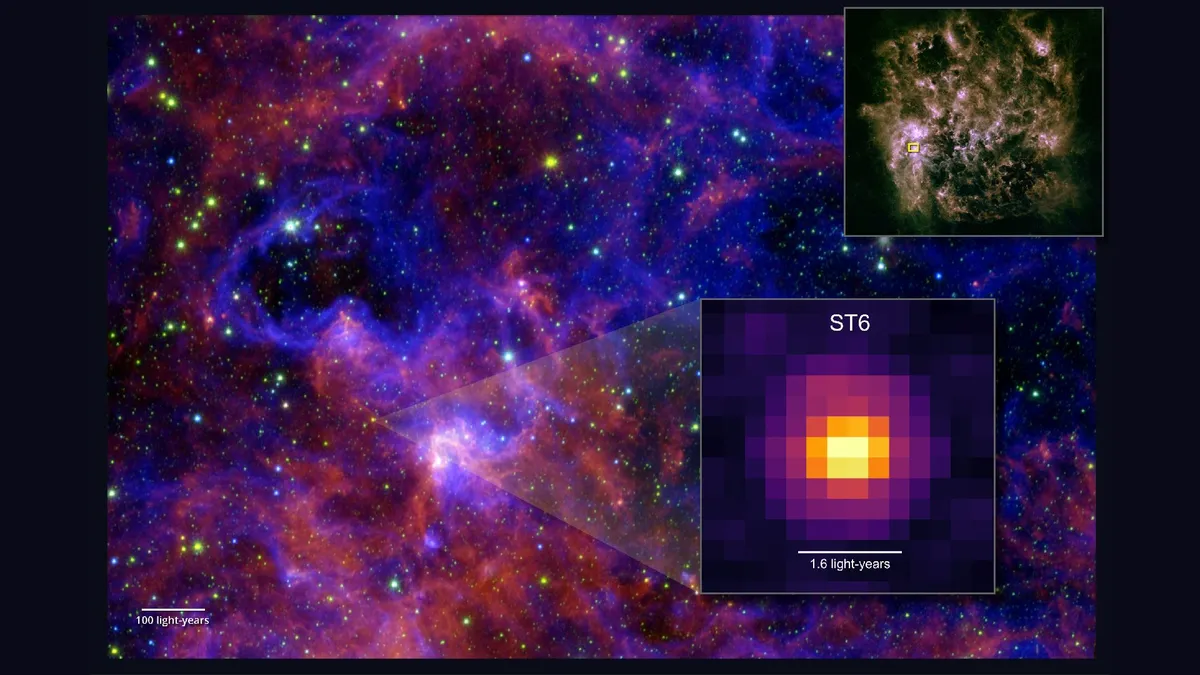
For the first time, scientists have detected multiple complex building blocks of life in the ice surrounding a star located outside the Milky Way. Utilizing the advanced capabilities of the James Webb Space Telescope (JWST), researchers identified five significant, carbon-based compounds around a protostar within the Large Magellanic Cloud, a small galaxy that orbits closely to our own Milky Way. These remarkable findings, published on October 20 in the Astrophysical Journal Letters, could enhance our understanding of how complex molecules formed during the early universe.
The Large Magellanic Cloud is a dwarf galaxy situated approximately 160,000 light-years from Earth. It is part of the Local Group, a collection of galaxies bound by gravity, which includes the Milky Way. This galaxy is characterized by its numerous hot, luminous stars that emit substantial amounts of ultraviolet radiation. Interestingly, the Large Magellanic Cloud also contains fewer elements heavier than helium compared to the Milky Way, mirroring the conditions anticipated in galaxies from the early universe.
According to study co-author Marta Sewilo, an astronomer at the University of Maryland and NASA's Goddard Space Flight Center, "What we learn in the Large Magellanic Cloud can be applied to understanding these more distant galaxies from when the universe was much younger." The extreme conditions present in the Large Magellanic Cloud provide valuable insights into how complex organic chemistry can take place in primitive environments where essential heavy elements like carbon, nitrogen, and oxygen are scarce.
In March 2024, researchers directed the JWST towards a developing star known as ST6 within the Large Magellanic Cloud. By employing instruments designed to measure infrared light, they successfully identified five complex carbon-based molecules in the ice surrounding the star: methanol, acetaldehyde, ethanol, methyl formate, and acetic acid. Among these five, only methanol had been previously detected in protostars beyond the Milky Way, while acetic acid, a primary component of vinegar, had never been conclusively observed in space ice before.
Sewilo emphasized the significance of their findings, stating, "Before Webb, methanol had been the only complex organic molecule conclusively detected in ice around protostars, even in our own galaxy." The exceptional quality of the new observations allowed researchers to gather an unprecedented amount of information from a single spectrum, providing deeper insights than ever before.
The researchers also detected signals that may indicate the presence of a chemical known as glycolaldehyde. This molecule has the potential to react with other substances to form ribose, a crucial component of ribonucleic acid (RNA), which plays an essential role in life as we know it. The discovery of such complex molecules in the Large Magellanic Cloud suggests that chemical reactions occurring on the surfaces of dust grains can yield intricate molecules, even in harsh cosmic environments.
Looking ahead, the research team intends to explore these and other similar molecules around additional protostars, both within the Milky Way and in nearby galaxies. Sewilo concluded, "With this discovery, we've made significant advancements in understanding how complex chemistry emerges in the universe, opening new avenues for research into the origins of life."